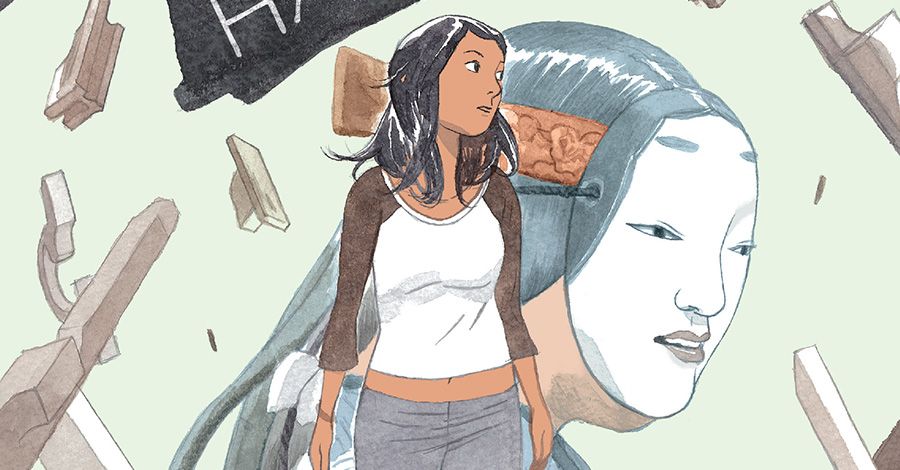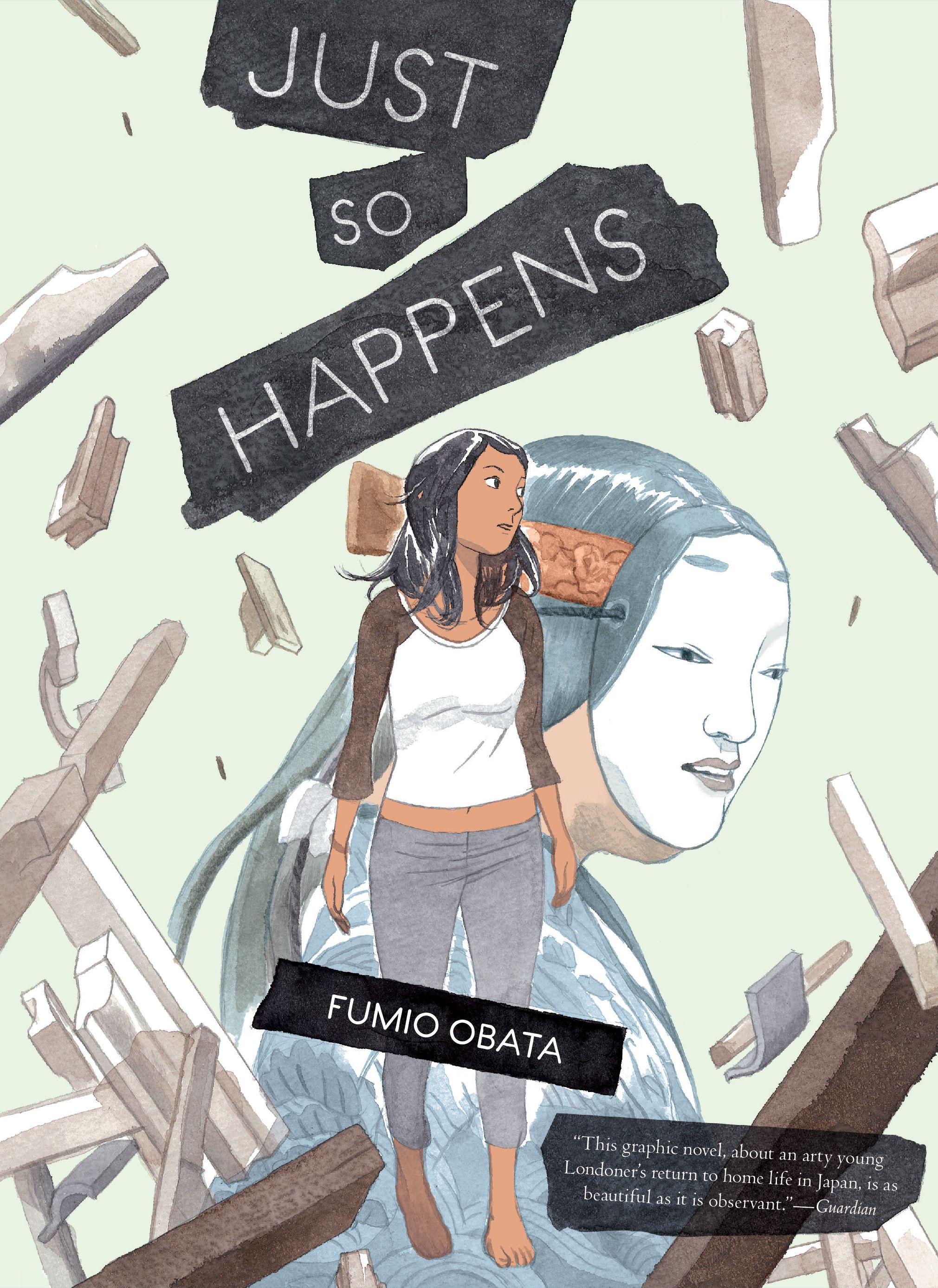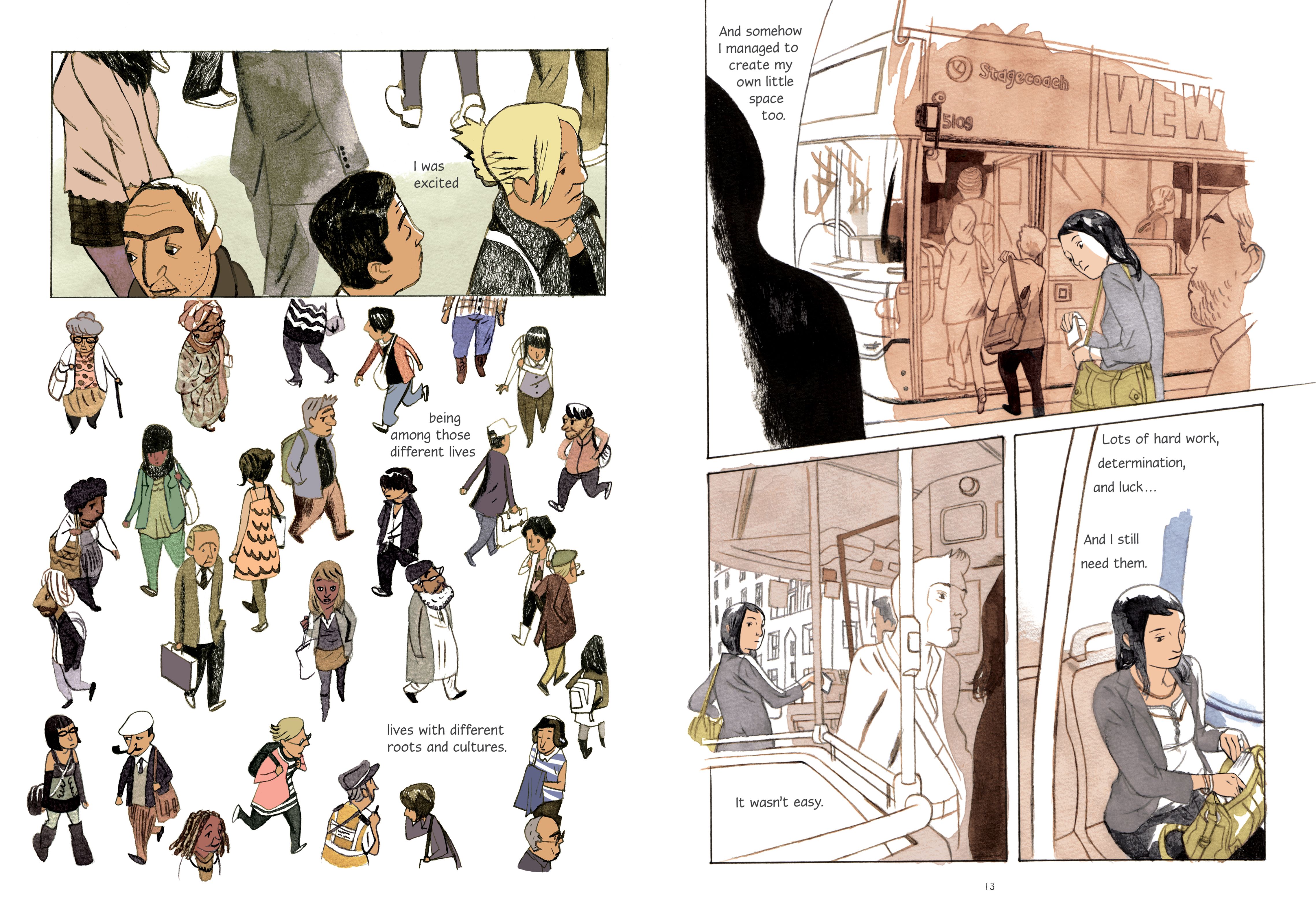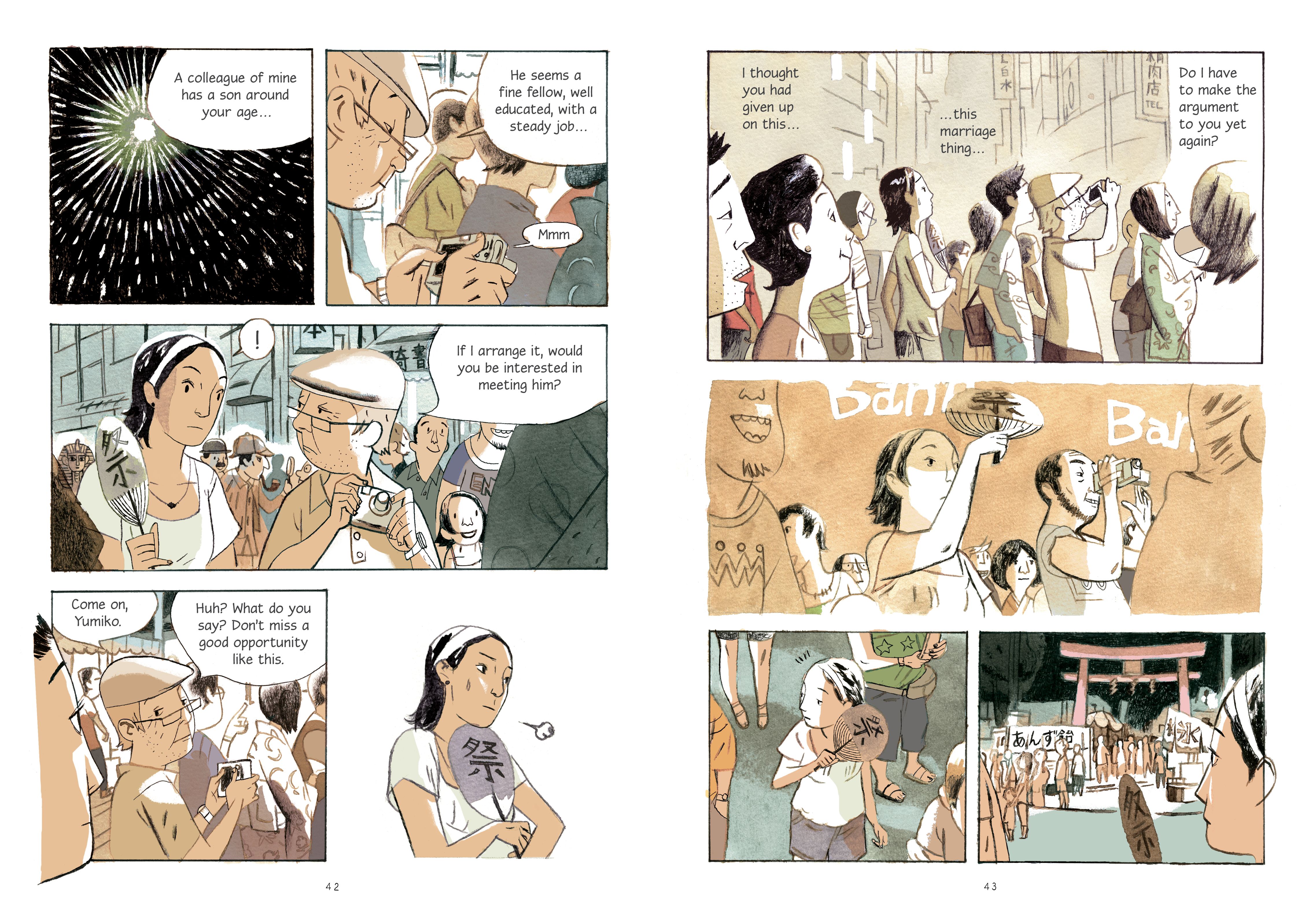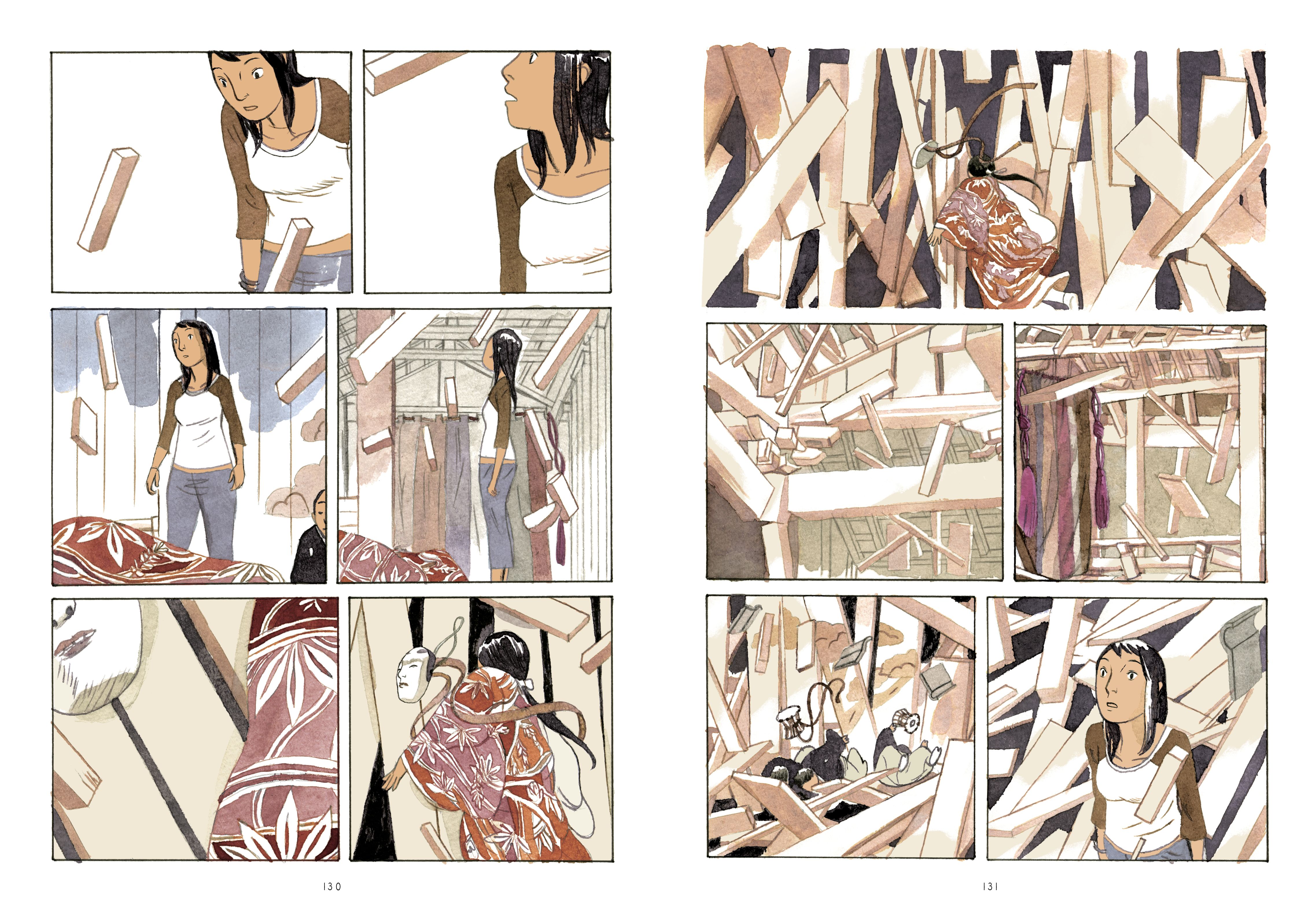When we first encounter Yumiko, the protagonist of cartoonist Fumio Obata's original graphic novel "Just So Happens," she has been living in London for quite some time. Following her father's death, she must return home to Japan. The trip forces her to confront the expectations of two different cultures and their outlook on family, women and careers.
Himself a Japanese immigrant living in England, Obata understands the cultural clash well. A teacher, animator and illustrator, he's lived outside of Japan for over twenty years, but the reach of his homeland still follows him to each project. For example, his website features a short journalism comic that looks at the port city Ishinomaki in the aftermath of the 2011 earthquake that devastated the Fukushima area.
PREVIEW: "Just So Happens" HC Vol. 1
Obata spoke with CBR News ahead of the book's March 17 release from Abrams ComicArts about how the cultural experience of being an immigrant is vastly different for men and women and the multicultural influences that impact his approach to storytelling.
CBR News: "Just So Happens" could've simply been autobiographical but, by creating a woman protagonist in Yumiko, you added another layer to the cultural experience: the expectations of a culture on its women. Did the extra layer of separation force you to reevaluate your own experiences?
Fumio Obata: Definitely. The thing is, there are different perspectives that naturally emerge when we talk about today's cultural crossovers. Immigration covers different genders and generation gaps, and these are really deep and fascinating, especially through females' eyes. I feel advantaged being a male back in Japan, but then it isn't the same here in the U.K. I wanted to examine this and, by using a female protagonist, I studied the feeling and sentiment that I had as a male, to see how they could have been perceived differently if I were a woman.
How old were you when you left Japan to live in England? When did this book begin to develop in your mind?
I left Japan when I was 16 years-old back in 1991. Initially, I was staying in the U.K. for about three years and thinking of enrolling into a Japanese university afterwards, but I found myself more comfortable in the U.K. so I stayed on. Around ten years later, as I was studying at art colleges here in the U.K., I was made to think hard of my roots and identity but I wasn't ready to explore it. I suppose the beginning of something, which eventually turned into this graphic novel, had already started there.
The theme of a daughter's relationship with her parents, specifically the individual relationship with her mother and then separately with her father, comes up in a big way here. In fact, Yumiko's parents being divorced creates a very clear split; we can infer something of the parents' relationship, but all we see is Yumiko with her father (in flashbacks or through her words and thoughts) or Yumiko with her mother.
It was intentionally planned that way. I was so worried about whether Yumiko's parents' relationship looked unreal, but at the same time I wanted to leave certain things to the imagination of readers. I always have questions about how many details of my characters' backgrounds that I need to reveal to my readers. Storytellers don't need to explain everything and, by concealing and leaving it vague, it could give the tale a mysterious feel and more depth too. It may not work all the time but I like writing this way.
Obviously, everyone's experience is unique to them, but is the idea that Yumiko was expected to eventually come home and settle down to raise grandbabies based in any particular experience or cultural norm?
A cultural norm, possibly in both modern and traditional. There's an unspoken feeling toward female professionals who work in Japan or outside Japan that they are expected to eventually quit their work and concentrate on raising children. We like and respect tradition in Japan and, traditionally, women stay home and keep households for men but it collides with the change to facilitate more female workforces because the society needs their contribution. Today, the media talks so much about sharp decrease in child population and puts more pressure on my generation to settle and raise kids.
I was asked by some elderly relatives and people in their 60s to come back to Japan and have kids there. The thing is, young couples need more overall support to be able to have both careers and family lives, but the system isn't as developed. The old generations are, I think, a bit influenced by the media and this goes more straight to career women in their 30s. I tried to reflect that in the father's opinion, but I didn't mean to present him as bigoted. It was a story about emotion but also about living in two different cultures. I tried to insinuate these elements without being too specific or political.
Your line art here is fairly simple, clean and clear, but the watercolor brings a lot of depth and warmth to that clarity of line. Did you experiment with many techniques to find the right visual voice for this story?
Yes, I did experiment a lot and I made lots of failed panels! This technical approach wasn't initially with me and it took a bit of a journey. Firstly, I referred a lot to the French artist Emmanuel Guibert because I adore everything he does, especially "Alan's War," originally published by L'Association. I tried hard to emulate some of his delicate texture and subtle atmosphere but, in the end, I had to bring in more colors to emphasize the emotions, so then I looked at Italian comic artist Manuele Fior for his water coloring technique. Therefore, I would say my style for "Just So Happens" is a mixture of Japanese, French and Italian influences!
"Just So Happens" is an expanded version of your short comic "Going Back." How soon after finishing "Going Back" did you realize the story had more meat?
"Going Back" was for a competition organized by The Observer and I had a totally different idea for it at first. I knew very early that the idea for "Going Back" was for a long story and wasn't really suited for a short, but I wanted to win the competition so I forced myself to shorten the story because that idea was better than another one. I wanted to be noticed by the editors and, after I got noticed with this story, it would be easier to propose the longer version. I had a bit of a strategy and it worked out fine. I didn't win the competition but I got what I needed.
You've worked in comics, illustration, teaching and animation. Do you have a preference for one field over another? Or do they each scratch different creative itches?
All these fields influence each other and I prefer all this happening at the same time. Generally, creators are expected be just one thing in front of audience but I find it's hard to stay fresh this way. I guess I'm at my best doing comic strips but I get stuck easily if I don't have my illustration "input" and my students definitely keep me updated with the current trends. They intertwine, but because I let them.
Among your other work, you went to cover the aftermath of the 2011 earthquake in Japan as a journalist and told that story in comic form. What can you tell us about that experience?
It's been all about understanding my country from the scratch. I think what's been happening in the north and around the Fukushima region since 2011 is an epitome of old and modern Japan: lots of contradictions, problems and perseverance that the people have shown which is really inspiring. Two things I want to say briefly about it is that there are many lessons that we all need to pass on to the next generation, and it is worrying how easily we can forget and move on unless it has happened at our doorsteps.
What's next for you?
To make a reportage style graphic novel about the aftermath of the 2011 earthquake. I'm still researching, and I can only talk about the tip of the iceberg! It's been so difficult because I'm not a trained journalist and lack many necessary skills to investigate. Luckily, the people were truly wonderful and helpful and gave me lots of ideas. I hope the book will be worth their support and that it will be a meaningful one even for a non-Japanese audience.
"Just So Happens" is slated for release on March 17 from Abrams ComicArts.

